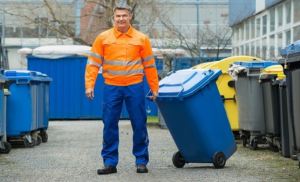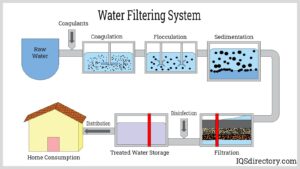Kitchen Remodelers Richmond VA isn’t for most DIYers. Finding a good contractor is crucial to the success of your project.
Start by asking for references from past clients. Also, verify a contractor’s license and insurance policy.

The kitchen is one of the most used rooms in any home, which means it’s also one of the most visible areas in need of remodeling. Unfortunately, homeowners often find that the costs of remodeling can quickly add up. Before starting a kitchen renovation, it’s important to create a budget that includes all potential expenses. This will help you avoid the frustration of running out of money in the middle of a project and may even save you money in the long run.
The largest expense when it comes to kitchen remodeling is labor. Hiring professional contractors typically results in higher quality work but can be expensive. To save money, you can try to do some of the non-specialized tasks yourself, such as painting or installing new hardware. However, this can be a risky proposition as you might not have the skills or experience necessary to complete the job correctly.
Another large cost is materials. Replacing countertops, cabinets and appliances can be extremely expensive. If you’re replacing your appliances, consider choosing energy-efficient models to save money in the long run. Additionally, you can save money on countertop material by selecting a less expensive option like quartz or laminate.
Lighting can be a huge expense as well, and it’s important to include this in your remodeling budget. On average, lighting represents around 5% of the total remodel cost. If you’re looking to replace your light fixtures, opt for low-cost LED bulbs to save on installation and electricity costs.
If you’re going to hire professionals for the installation, make sure to get multiple quotes before making a decision. Prices vary greatly, and you may be able to find a contractor who is more affordable than the competition. You should also factor in any demolition and hauling costs if your project requires breaking down existing walls or moving walls to alter the layout of the room.
Finally, it’s important to consider financing options for your kitchen remodel. There are a few different types of loans available, including the FHA Limited and Standard 203(k) loans and the Fannie Mae HomeStyle Renovation loan. A personal loan typically has a fixed interest rate and a set repayment schedule, while a home equity line of credit allows you to draw funds as needed over an extended period.
Design
Kitchen remodelers specialize in designing new spaces. They use their experience to create a design that fits your budget, space and style. They also provide floor plans, product and material selections and 3D images of your new kitchen. Some remodeling professionals are designers only, while others are licensed general contractors that can handle both design and construction tasks. A full-service kitchen remodeler will be able to help you design the layout of your kitchen, as well as select cabinets, countertops and appliances. They may offer free design services or charge a flat fee for planning and preparing your project.
The first step in a kitchen remodel is to measure the space and take note of any structural changes that are needed. This information will be used to draft a kitchen-design blueprint. A professional kitchen designer will also be able to make recommendations for lighting, appliance placement and any additional structural or electrical requirements. The design process typically takes a few weeks to a month, depending on the scope of the renovation and your personal schedule.
A mid-size kitchen remodel generally involves removing and replacing existing cabinetry, countertops and flooring. This may require the installation of drywall and some plumbing and electrical work. A major kitchen renovation can involve a complete reconfiguration of the floor plan, an enlargement or re-arrangement of pipes and gas lines, and the stripping down to studs and subfloor to install new electrical circuits and plumbing lines. This type of remodel is more expensive and requires the services of a licensed contractor, interior designer and possibly an engineer.
If you decide to move forward with a kitchen remodel, consider how your renovation will impact future home buyers. Over-customizing your kitchen may limit its appeal to potential buyers, so think about how you might change the layout or add features that would appeal to a wider audience of homeowners.
After the design is finalized, it’s time to start preparing for construction. During this phase, it’s important to set aside a safe place for your family to eat and sleep during the remodel. You’ll also want to designate a spot where you can keep your most essential items, such as food, water and cleaning supplies. Finally, be sure to create a construction-free area where you can escape the noise and mess of the project.
Installation
If your kitchen remodel involves a full renovation of the layout and design, it will be more expensive than a cosmetic update. A general contractor will manage this type of large-scale project, and they may use subcontractors to complete the work. This is an ideal option if you want to minimize costs, as the GC will be able to negotiate rates with these contractors. It’s also worth considering hiring an owner-operator contractor, as they may offer a more competitive rate since their overhead is lower.
In a “rip and replace” kitchen remodeling project, walls, doors, and windows come out before the GC’s carpentry crew starts framing new walls and installing new drywall. They’ll also remove any existing appliances, cabinets, countertops, and flooring. While this stage of a remodel may feel chaotic, it’s actually part of a well-orchestrated dance of plumbing, electrical, ductwork, and construction work that needs to happen in order.
Once the wall structure is framed, the electricians and plumbers can start their work. Once they’re done, the drywall is installed and wall texture applied. Then the cabinet installation can take place, followed by new counters and backsplash tile. Appliances and lighting are usually the last items to be installed.
A large kitchen remodel will require you to live without a working kitchen for a month or more, depending on the scope of the project. That’s why it’s important to choose a contractor with experience managing this type of project and who can offer you an estimate that accounts for the length of time you’ll be living without a kitchen. It’s also helpful to create a temporary space outside of your kitchen for meals and food storage during this period. As with any major home renovation, it’s important to set a budget and to stick to it. If you’re going over your budget, ask a kitchen remodeling specialist for advice on how to save money and stay on track. They will have tips to help you make the most of your kitchen remodel without compromising quality. And remember that you will likely have to get a building permit and pay for associated inspections.
Finishing
Ideally, you’ll find contractors that understand your vision and want to help bring it to life. They’ll be willing to answer your questions, explain the scope of work, and offer a clear timeline for the duration of the project. If they anticipate hiccups, they’ll also include buffer periods in their schedule to accommodate them.
A remodel goes beyond a cosmetic facelift and typically involves replacing (not just repainting or refinishing) all major surfaces, including flooring, countertops, sinks, and kitchen cabinets. The process can also include adding new elements like an island or additional cabinetry to create a fresh, functional design.
If you’re not sure what type of remodel is right for your space, find kitchen remodelers that provide design services and can guide you in creating the perfect layout and aesthetic. They should be able to supply you with the appropriate materials and fixtures from suppliers that align with your budget and vision.
As you narrow down your shortlist of potential contractors, ask about their experience with projects similar to yours. Look for documented examples of their work and testimonials from past clients. Also, look for kitchen remodeling contractors that are members of national industry organizations like the National Kitchen and Bath Association (NKBA) or the National Association of the Remodeling Industry (NARI). These memberships can indicate that they follow a code of conduct, are up to date on best practices in their field, and have access to expert resources and training.
Lastly, you should request an in-person site meeting with your top contractor candidates before signing a contract. This will give you an opportunity to meet with them and discuss the project, their vision for your kitchen, and any specifics you need to know about the scope of the work. It’ll also be a chance to gauge their personality, communication style, and how well you get along.
Vetting thoroughly, formalizing expectations contractually, inspecting work regularly, and maintaining open communication throughout the process ensures your kitchen or bathroom renovation unfolds successfully.



